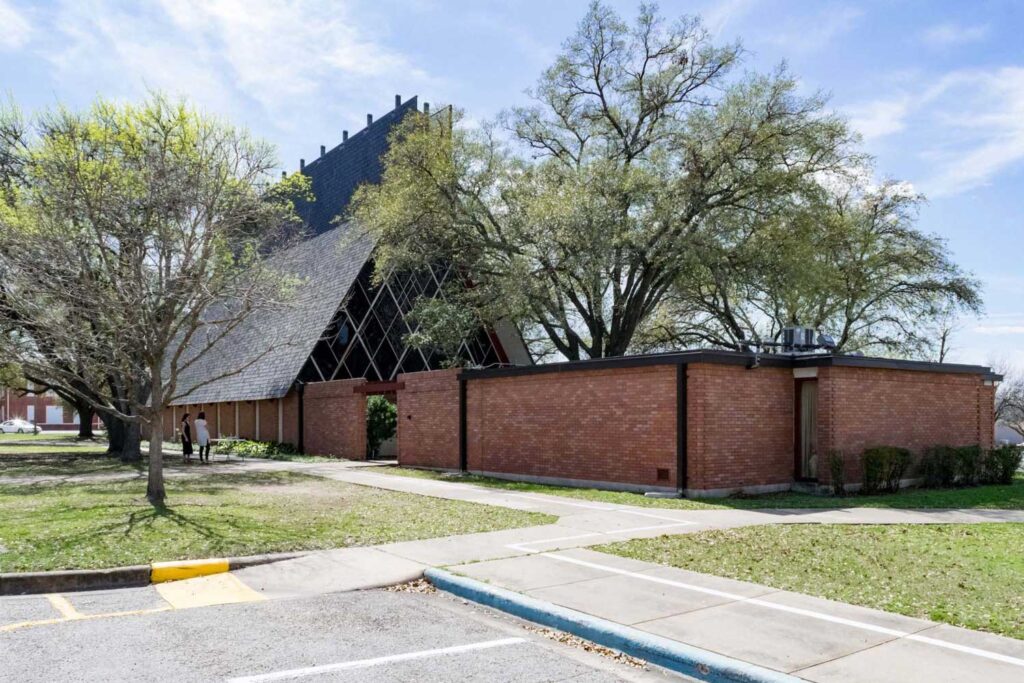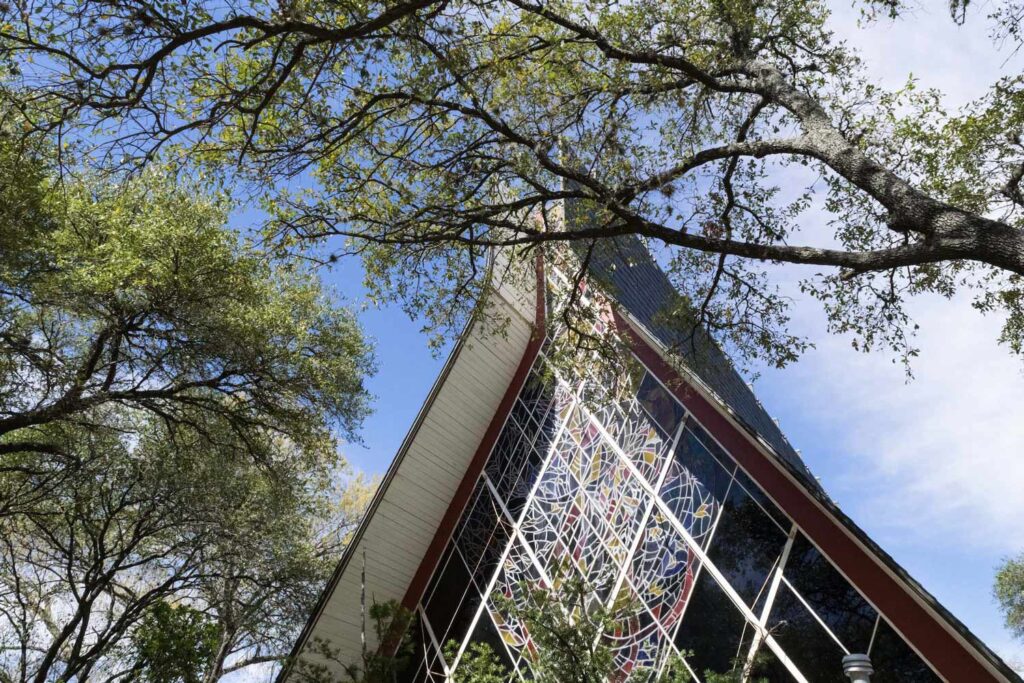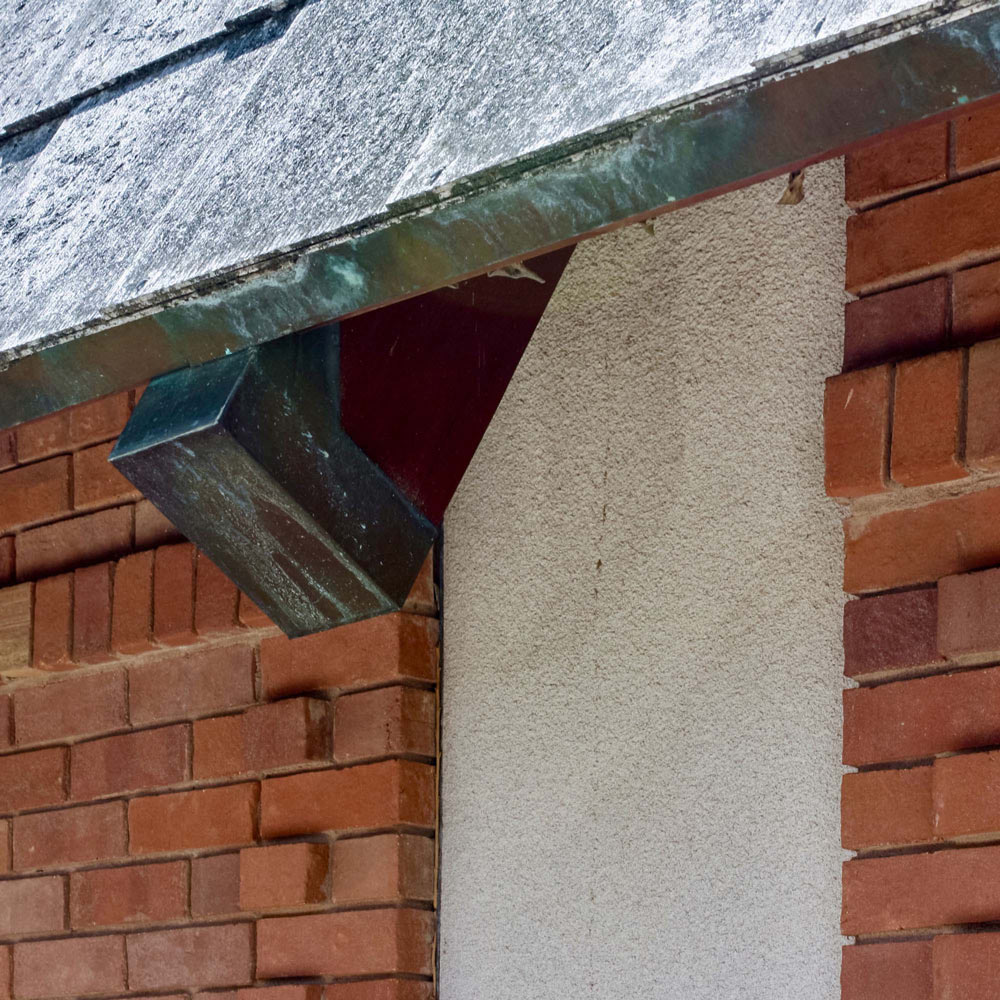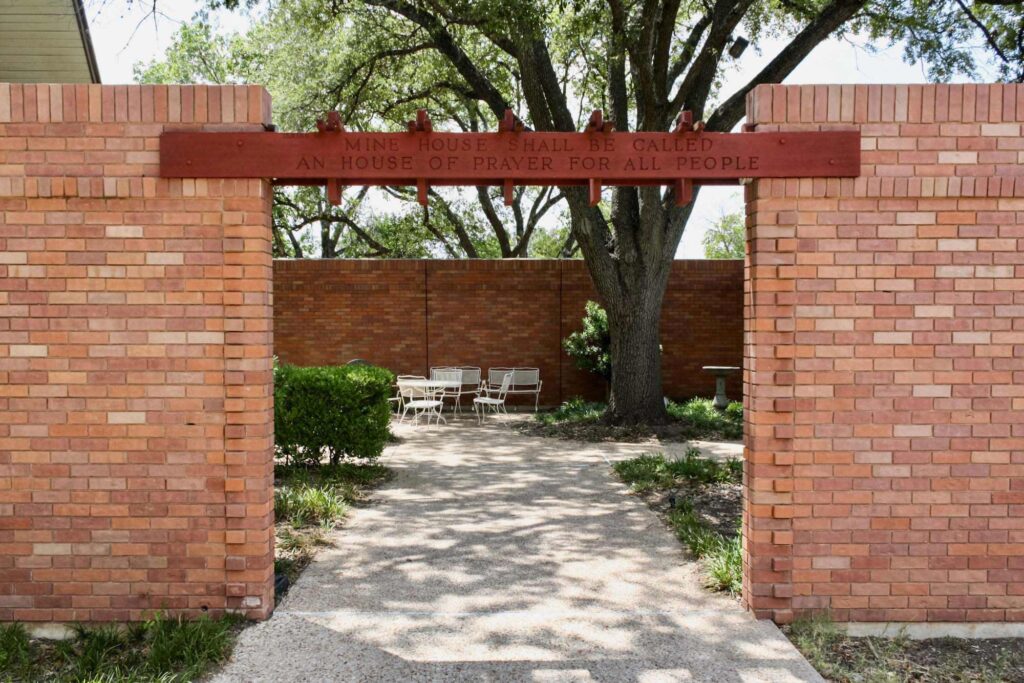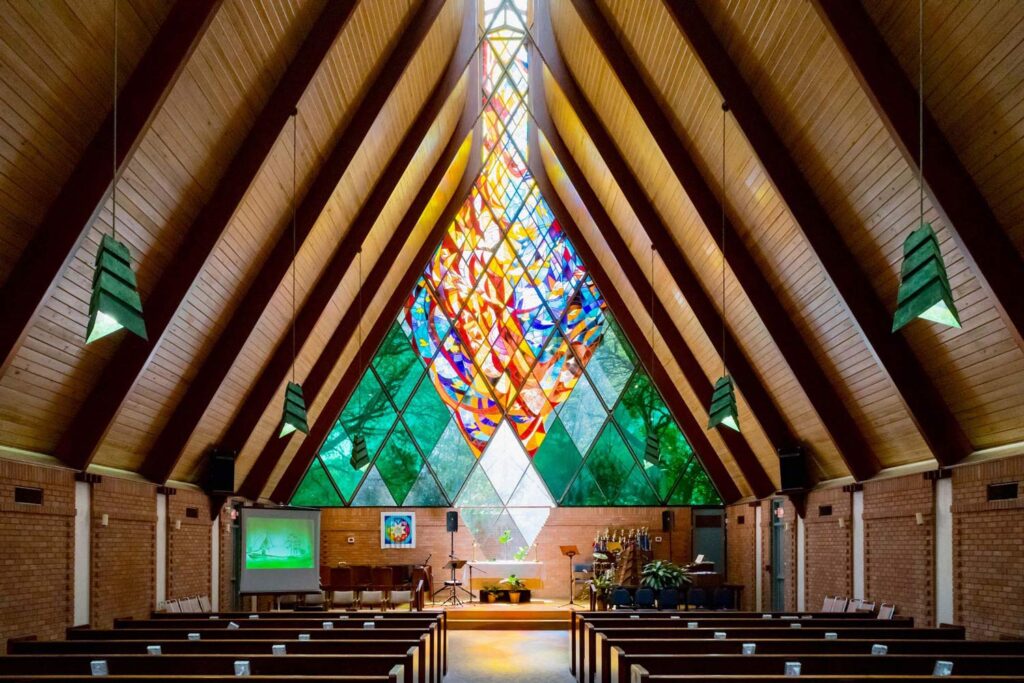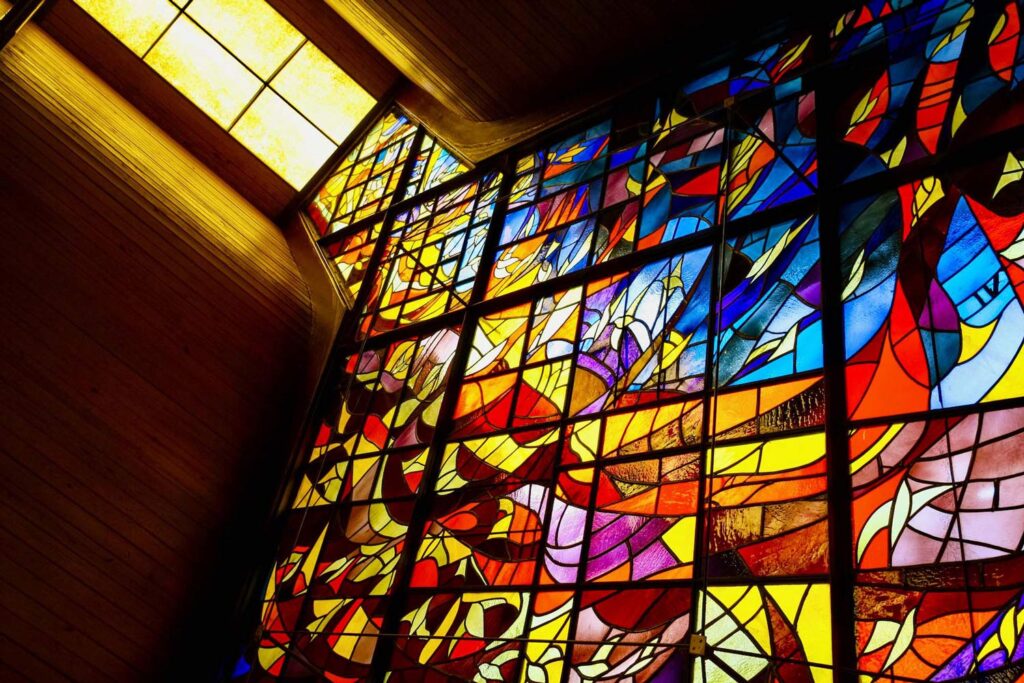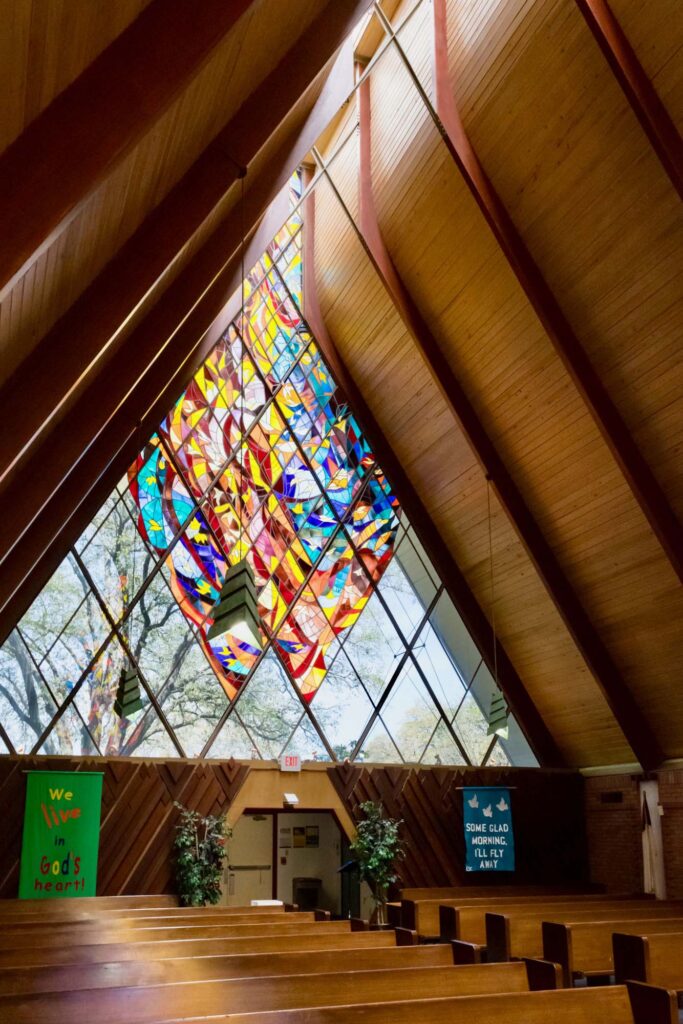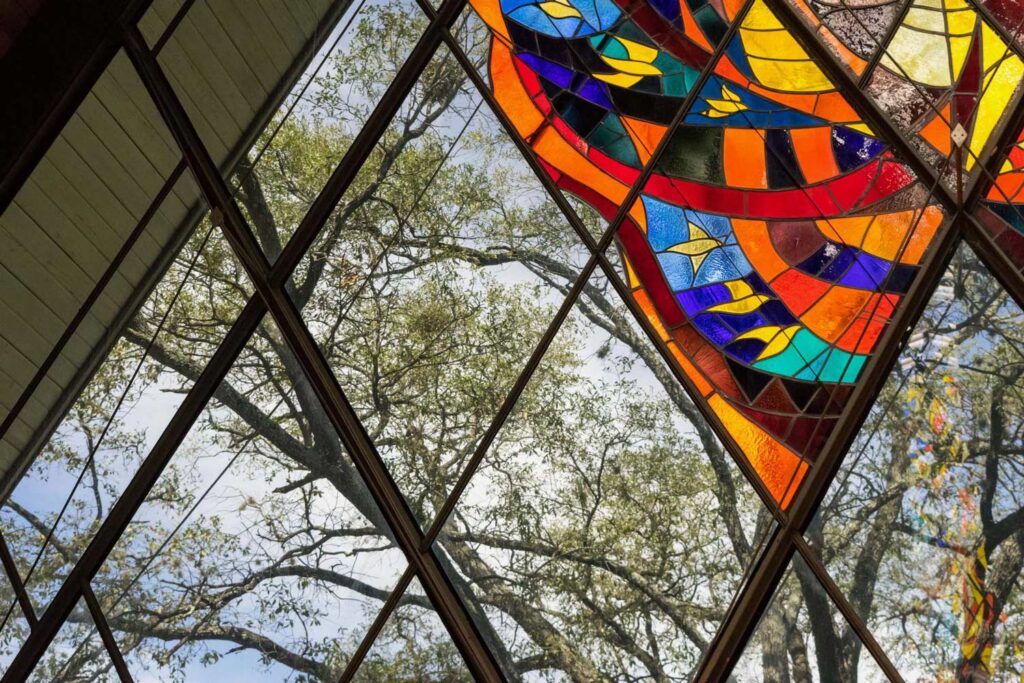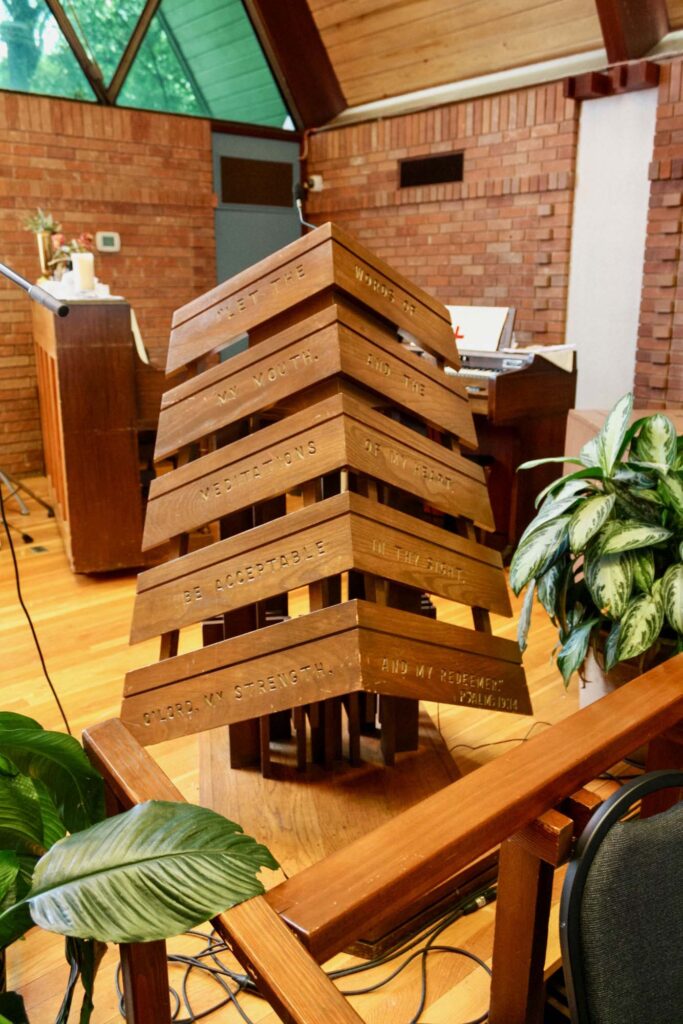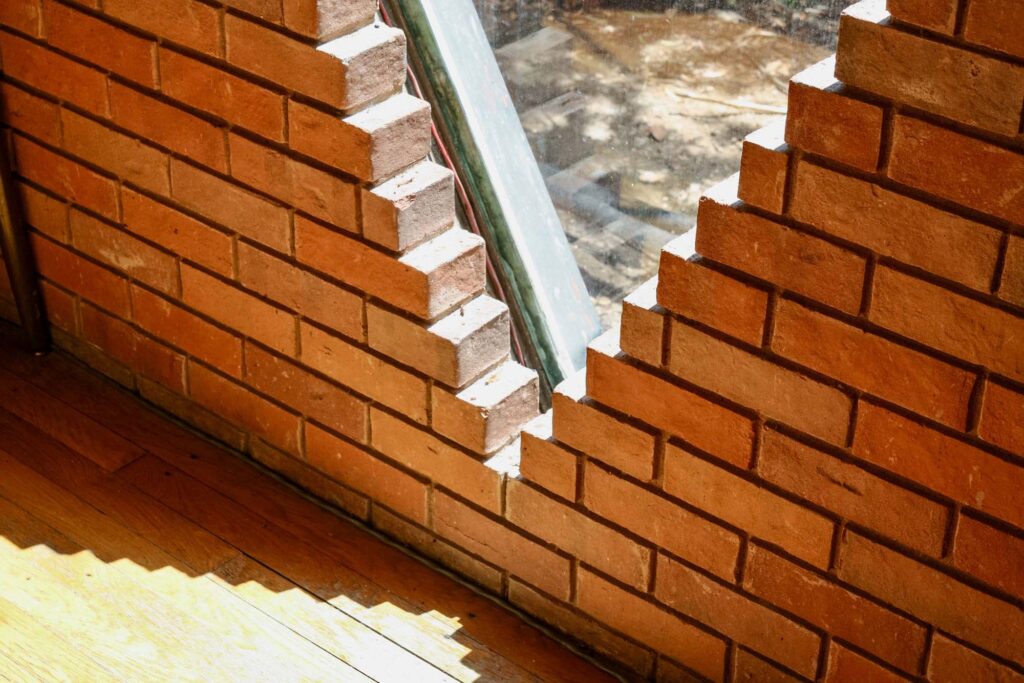- Built:
- 1961
- Architect:
- David Graeber
- Style:
- Mid-Century Modern
- Historic Status:
- National Register of Historic Places
Description
The Austin State Supported Living Center (ASSLC) serves “people with intellectual and developmental disabilities who are medically fragile or who have behavioral problems.” The All-Faiths Chapel, built in 1961, is the most prominent building on campus: a modern A-frame building with custom designed furnishings, fittings, and art.
Placemaking
Formerly known as the Austin State School, the Austin State Supported Living Center is one of a number of many such facilities around the state whose mission is to “serve people with intellectual and developmental disabilities who are medically fragile or who have behavioral problems.” According to the current chaplain, the Reverend Dr. Paul Kraus, the community model of care represented by a supported living center significantly increases life expectancy and improves residents’ quality of life. The operative metaphor is that of a “village” in which a diversity of spaces provides residents with a controlled degree of freedom compared to confinement in a monolithic building.
During a period of significant growth in the 1950s, the school recognized the need for a dedicated religious space on campus. The building’s architect, David Calvert Graeber, selected the tent-form “A-frame” that was gaining popularity at the time due to a combination of its formal spiritual resonance and its relative economy. He used that form to manipulate natural light and accentuate strong diagonal elements to create a unified visual aesthetic for this campus centerpiece.
As the campus grew into a village, its chaplains saw the need for a central location to care for the diverse spiritual needs of the residents. An interfaith group of volunteers—made up of representatives from the Protestant Austin Council of Church Women, the Austin Jewish Community Council, and the Catholic Ladies of Charity—conducted a statewide fundraising campaign for the chapel. The Texas House of Representatives later recognized their contribution in a resolution commemorating the chapel’s dedication that began: “WHEREAS, The State of Texas has received a gift from the church women of this State. Its purpose is the highest and its beauty equal to that purpose.”
The beauty of the chapel arises from the thoughtful integrity of the design. For example, the triangular roof that dominates the building communicates verticality, both from the exterior and interior. From the outside, the tall peaked form creates an emblematic profile, marking the building as special and different from the surrounding blocks without the need for the addition of a tower. Internally, the roof creates an uplifting feeling, directing attention upward while still maintaining an intimate scale.
Light is of primary importance in many religious buildings, and the tent-form church allows for creative methods for introducing light into the space. Here, Graeber used two contrasting strategies: opening the gable ends to contrast the solid ceilings and introducing a full-length skylight along the ridge. The peak where the roofs join would ordinarily create a dark corner, but here the two wooden roof planes are held apart, allowing light to enter and the space to open to the heavens. The triangular gables pick up the diagonals of the roof lines, incorporating them into the pattern of the window mullions. This unique diagonal form continues in the furnishings designed specifically for the chapel, further uniting the design. The stained glass by artist Blossom Burns establishes the place as separate, special, and sacred. The dynamic shapes of the stained glass direct attention upward, reinforcing the uplifting motion of the space.
Over the years, the chapel has truly become the spiritual heart of the village. Many of the current residents are those same children for whom Graeber originally designed the space. The chapel remains a significant central landmark within the campus, offering a space of relief and respite within the sacred precinct formed by its enclosed courtyard. Entering this space, residents may choose to enter the chapel to the left or to seek the care of the chaplains in the low suite to the right. It forms a whole world unto itself, a campus within a campus, an escape from the everyday struggles outside, and a place of healing. – Jason John Paul Haskins, AIA
Jason John Paul Haskins, AIA
